Excessive or uneven tyre wear is a common issue that most drivers will encounter at some point. Go have a look at your tyres now and you may see what we mean. As tyres are made of rubber, they are designed to wear down gradually and evenly. However, if they aren’t wearing evenly, it’s usually a sign that something is wrong.
Whether it’s improper wheel alignment, inflation issues, or worn-out suspension, the root cause needs to be identified and addressed quickly to ensure both safety and performance. By understanding tyre wear patterns, you can diagnose these issues early yourself, and be ready to take action.
Not sure where to start? Don’t worry, we’re here to help!
Types and Causes of Tyre Wear
Recognising different tyre wear patterns is the key to diagnosing potential problems with your vehicle. Each pattern tells a story about what might be going wrong, so let’s dive into some of the most common types:
Toe Wear
Nope, nothing to do with your own feet don’t worry. Toe Wear occurs when the inner or outer edge of the tread wears down more quickly than the rest of the tyre. This is usually a result of poor alignment, specifically a toe misalignment.
This can happen if your vehicle’s wheels are angled inwards or outwards too much. If left unchecked, this can reduce the lifespan of your tyres and compromise vehicle handling. Regular wheel alignments can prevent Toe Wear, ensuring that your tyres wear evenly and last longer.

Camber Wear
Camber Wear is pretty easy to identify because you’ll be able to see one edge of the tyre wearing down more than the opposite edge. This type of wear is linked to camber misalignment, where the wheels tilt too much inward or outward when viewed from the front of the vehicle.
Positive camber causes the outer edge to wear. While negative camber causes the inner edge to wear. Improper camber settings can result from issues with the alignment or suspension system. Regular checks and adjustments can help maintain proper alignment and prevent camber wear.
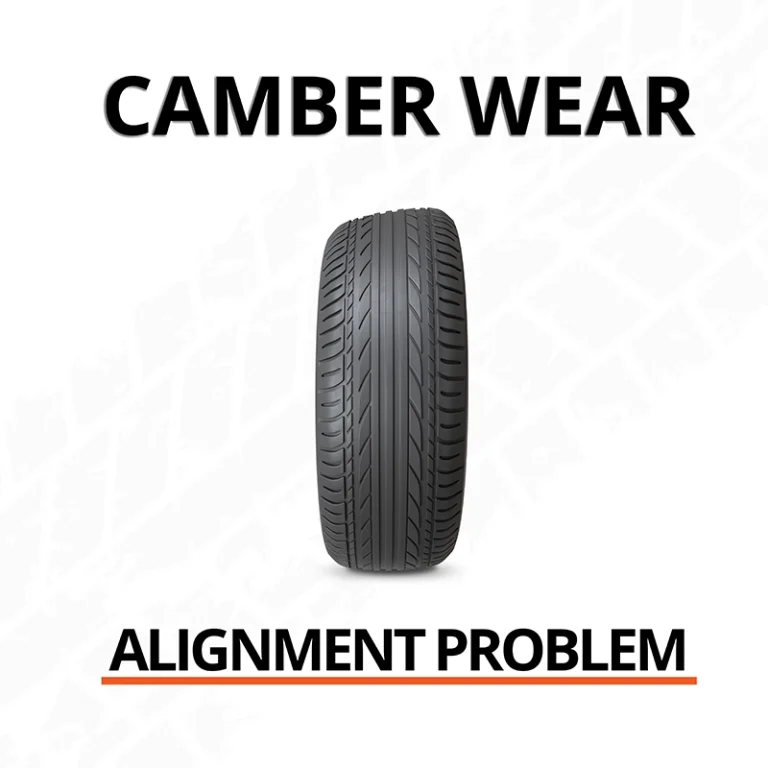
Centre Wear
When the centre of the tyre tread is wearing down faster than the edges, this is known as Centre Wear. This pattern is a telltale sign of overinflation. When a tyre is overinflated, the middle section of the tread bears most of the vehicle’s weight, while the edges lift slightly off the ground, leading to uneven wear.
Overinflation not only reduces the lifespan of your tyres but can also negatively impact the handling and comfort of your vehicle.
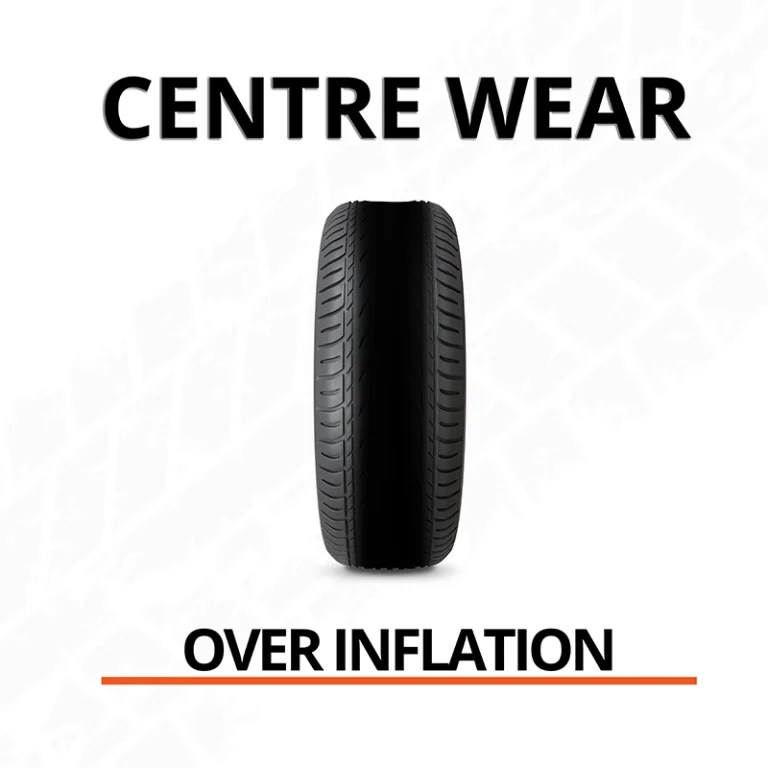
Edge Wear
Forgot the place in London, this type of Edge Wear is the opposite of centre wear. Here the outer edges of the tyre tread wear down faster than the centre. This pattern is typically caused by underinflation, causing the outer edges to make more contact with the road. As the tyre flexes more than it should, the edges carry an excessive load, leading to rapid wear.
Under-inflated tyres also generate more heat, which can increase the risk of tyre failure.
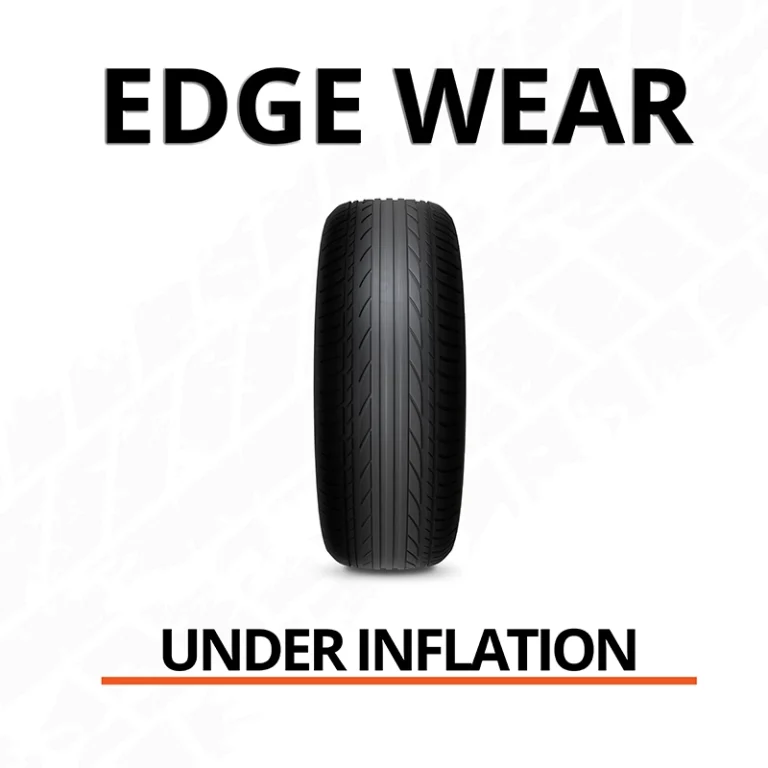
Patch Wear
Patch Wear appears as irregular, patchy areas of wear on the tread, indicating that the tyre is not balanced correctly. An unbalanced tyre will have uneven weight distribution, causing it to bounce or wobble as it rotates, which leads to uneven wear. Patch wear can also be caused by a misaligned suspension or a bent or buckled wheel. If you notice this type of wear, it’s important to have your tyres balanced and your suspension system checked by a professional.
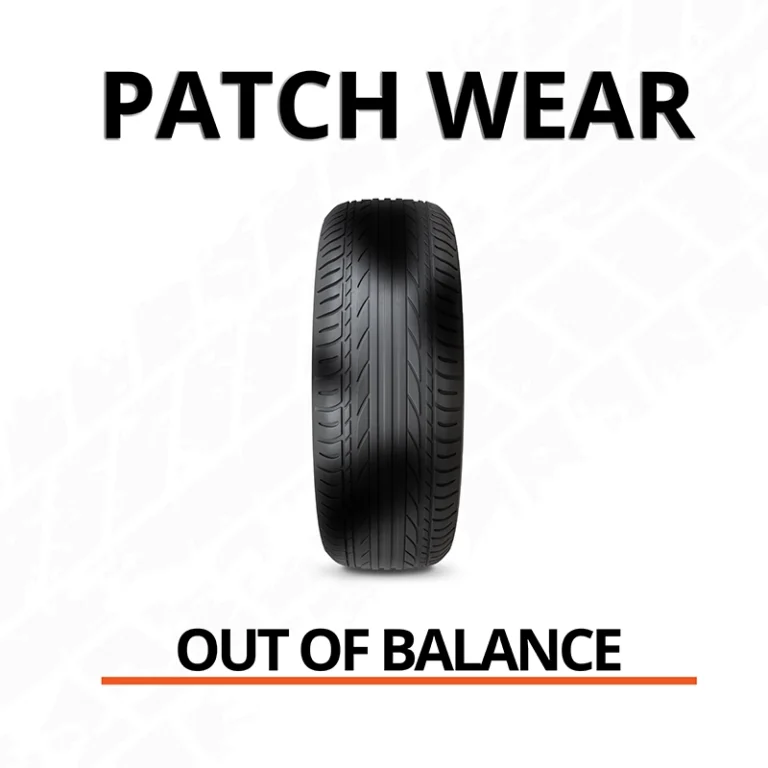
Cup Wear
Cup Wear, also known as scalloping, shows up as diagonal scoops or dips across the tread. This is usually accompanied by noticeable vibrations or noise when driving. This type of wear is often a sign of a more serious issue. This could be worn, bent, or damaged suspension components. Damaged suspension can cause the tyre to bounce excessively, leading to this uneven wear pattern.
Cup wear should be addressed immediately, as it can significantly affect your vehicle’s handling and safety. A visit to our team for a thorough inspection and repairs is strongly recommended!
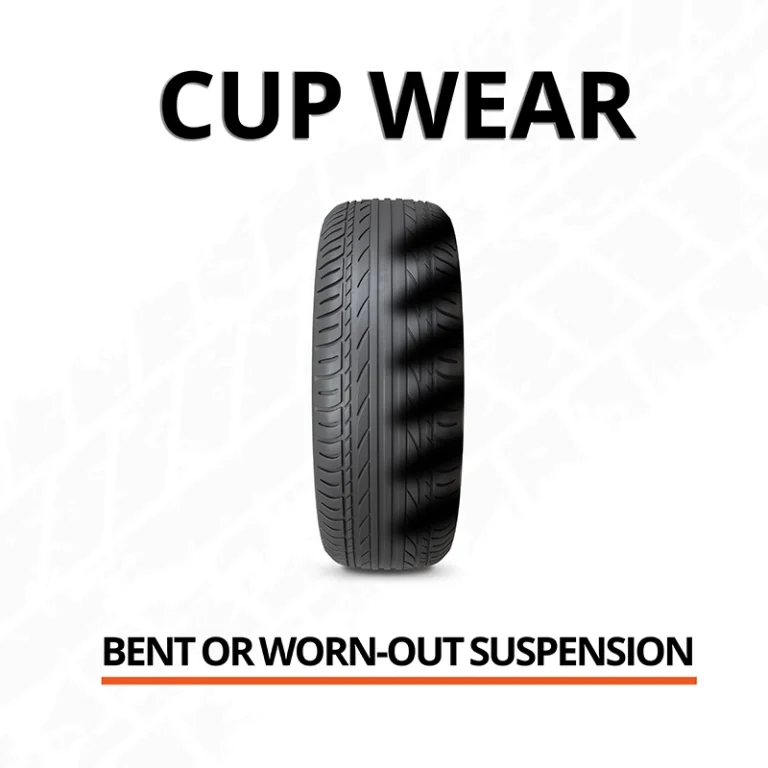
Conclusion:
If you’ve noticed any unusual tyre wear patterns or need more advice on tyre maintenance, don’t hesitate to get in touch with us.
Properly diagnosing and addressing these issues is key to ensuring the safety and performance of your vehicle. From alignment to inflation issues, understanding what causes tyre wear can help you understand what are the right steps to take to extend the life of your tyres.

